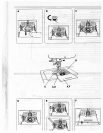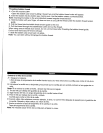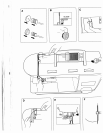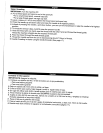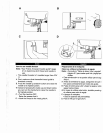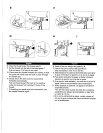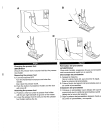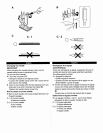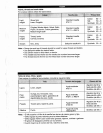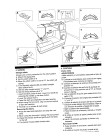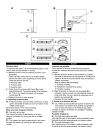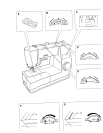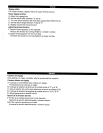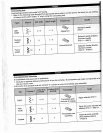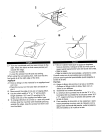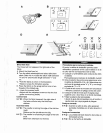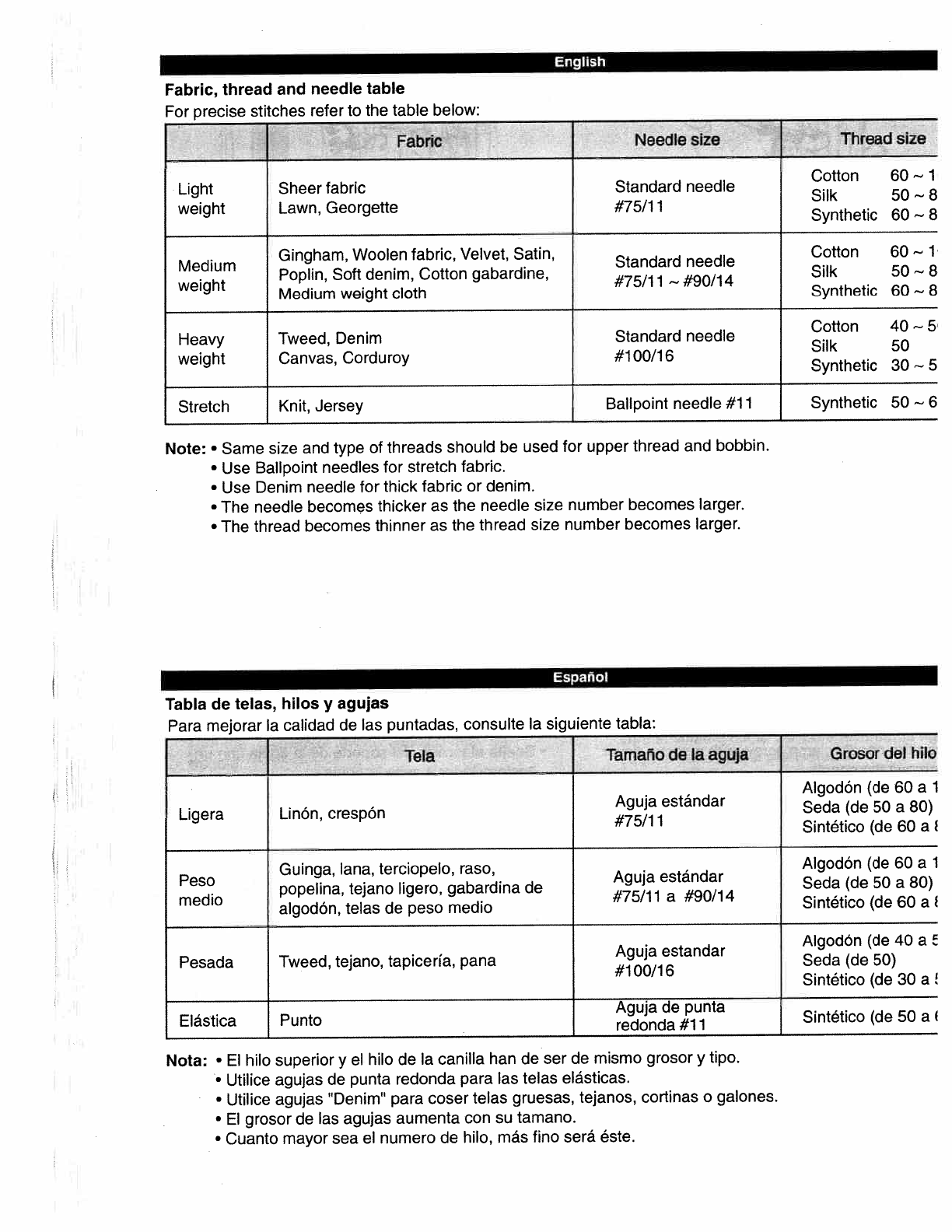
English
Fabric,
thread
and
needle
table
For
precise
stitches
refer
to
the
table
below:
Fabtie
Needle
size
Thread
size
Cotton
60
-
1
Light
Sheer
fabric
Standard
needle
Silk
50-8
weight
Lawn,
Georgette
#75/11
Synthetic
60
-
8
Gingham,
Woolen
fabric,
Velvet,
Satin,
Standard
needle
Cotton
60
—
1
Medium
.
Poplin,
Soft
denim,
Cotton
gabardine,
#75/11
#90/14
Silk
50
-
8
weight
Medium
weight
cloth
Synthetic
60
8
Cotton
40—5
Heavy
Tweed,
Denim
Standard
needle
Silk
50
weight
Canvas,
Corduroy
#100/16
Synthetic
30
—
5
Stretch
Knit,
Jersey
Ballpoint
needle
#1
1
Synthetic
50
6
Note:
•
Same
size
and
type
of
threads
should
be
used
for
upper
thread
and
bobbin.
•
Use
Ballpoint
needles
for
stretch
fabric.
•
Use
Denim
needle
for
thick
fabric
or
denim.
•
The
needle
becomes
thicker
as
the
needle
size
number
becomes
larger.
•
The
thread
becomes
thinner
as
the
thread
size
number
becomes
larger.
Español
Tabla
de
telas,
hilos
y
agujas
Para
mejorar
Ia
calidad
de
las
puntadas,
consulte
Ia
siguiente
tabla:
•
Tela
Tamaño
de
Ia
aguja
Grosor
del
hilo
AlgodOn
(de
60
a
1
Ligera
Linón,
crespOn
Aguja
estãndar
Seda
(de
50
a
80)
#75/11
Sintético
(de
60
a
Guinga,
lana,
terciopelo,
raso,
AlgodOn
(de
60
a
1
Peso
popelina,
tejano
ligero,
gabardina
de
Aguja
estándar
Seda
(de
50
a
80)
#75/11
a
#90/14
medio
algodOn,
telas
de
peso
medio
Sintético
(de
60
a
Pesada
Tweed,
tejano,
tapicerla,
pana
Aguja
estandar
AlgodOn
(de
40
a
E
#100/16
Seda
(de
50)
Sintético
(de
30
a
Elástica
Punto
Aguja
de
punta
redonda
#11
Sintético
(de
50
a
Nota:
•
El
hilo
superior
y
el
hilo
de
Ia
canilla
han
de
ser
de
mismo
grosor
y
tipo.
•
Utilice
agujas
de
punta
redonda
para
las
telas
elásticas.
•
Utilice
agujas
“Denim”
para
coser
telas
gruesas,
tejanos,
cortinas
o
galones.
•
El
grosor
de
las
agujas
aumenta
con
su
tamano.
•
Cuanto
mayor
sea
el
numero
de
hilo,
más
fino
será
éste.



